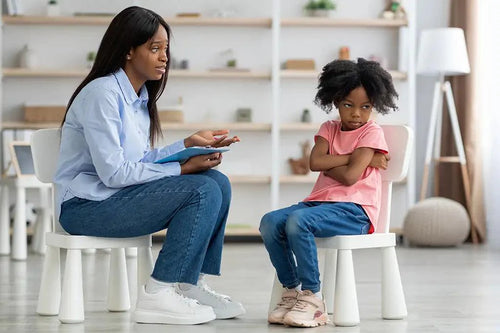How to Address Persistent Defiance

There are always certain students who know how to test your limits. Most students can be confrontational at times, especially if they’re tired, hungry, or overwhelmed.
Something to note, up to 16 percent of all children and 40% of studentsdiagnosed with attention-deficit/hyperactivity disorder have oppositional defiant disorder(ODD), which is characterized by consistent negative and hostile behavior. This can include deliberately annoying or upsetting others, explosions of anger and hostility, defiance or frequent arguing with adults, and blaming others for their own misbehavior.
It is not uncommon for educators to get defensive about stubborn behavior. This creates a power struggle between the teacher and student that is ineffective. So, what should a teacher do to handle students who openly break the rules or has a pattern of hostile behavior? Here are some suggestions.
Remain Calm
You will quickly learn that showing anger is counterproductive when your students are being difficult. It can make the behavior worse. Difficult students are often amused or encouraged by upsetting an adult or authority figure. Even when you are upset, it’s important not to allow the student to see your emotional response. Keep a positive tone and show neutral body language. Be careful about approaching the students or going into their personal space because might escalate the situation.
Choose Your Words Carefully
Do not make the interactions personal. Neither use the “I” word nor the “you” word. Interactions, when dealing with difficult behaviors, should be about the expectations and whether or not the expectations are being met. Giving a clear directive, a clear and calm and brief description of the unwanted behavior, and then choice to comply with the consequence of doing so and the choice not to comply with the consequence that will then result, makes the interaction about the choices available and not about your will versus their will. Remember to keep directions concise and deliver them in different ways such as: in writing, spoken aloud, or using signals. If it is possible, offer choices where you will be happy with either outcome. For example, give your students the choice to sit at their desk or on bean bags on the floor while doing their work. This may make students feel like they have control without having to display uncooperative behavior.
Reinforce Positive Behavior
It can be easy to focus only on a student’s adverse behavior. Try focusing on their positive behavior when you are able. Look for and reward even small steps toward better behavior and cooperation. When a previously disruptive student shows improvement, give it attention. Positive notes home seems to be especially effective. One teacher said that a parent once told her that not only was that the first positive note the student had received, but he was so proud of it that he kept it on the refrigerator to see it every day. Don’t underestimate the power of positive words in shaping behavior.
Determine the Cause of the Behavior
Behavior may help students escape unfortunate circumstances. Think of a student’s behavior as feedback or a form of communication.
Ask yourself:
• When does this behavior happen or not happen?
• What happens before and after the behavior?
• Are there factors outside of the student’s control that might be causing or contributing to the behaviors? (For example, has the student experienced trauma? Does he or she come from a household with housing or food instability? A neglectful home?)
• Who is the audience?
There may be reasons for the misbehavior. Understanding the cause of the behavior will help in creating a plan to address the issues.
If a student frequently shows problematic behavior, it may be possible to request a functional behavior assessment (FBA). An FBA looks at academic and non-academic factors that may be contributing or triggering the undesired behavior. An FBA is usually conducted by a group, which can include a special education teacher, general education teachers, parent or guardian, school admin, and specialists. The FBA is then used to create a behavior intervention plan.
Make a Plan
Once the student’s behavior is talked about, a plan may be developed to prevent it from continuing. A behavior intervention plan outlines steps a teacher can take when a negative behavior occurs. This plan should teach the student more productive behaviors and strategies. Some of the changes the teacher may need to make can be the environment, like moving the student’s seat. The teacher may need to change their teaching methods or shorten or modify an assignment to match the student’s capability.
When given the right tools and environment, students with inappropriate behavior can learn effective strategies that will help them have positive interactions with others.